Matt Wild knows a thing or two about strength.
A former Marine, Wild served his country as an E-4 Corporal working on weapon systems for F18 fighter planes.
At his strongest, the 6-foot-2-inch 230-pound Wild could run 3 miles in 18 minutes and knock out 20 pullups without breaking a sweat.
“I could do anything I wanted to do,” he says.
He felt invincible, as most men in their 20s do. Matt doesn’t feel that way these days, though. His body is failing him. Confi ned to a mobility chair, Matt can no longer walk. ALS has starved the muscles in his legs and arms and is now targeting those around his lungs.
Yet Matt is strong, perhaps stronger than ever. His is an inner strength that has driven him to accomplish things even his former self might not have attained.
“It’s an internal, mental, emotional strength of just trying to make the best out of every day,” he says.
Matt is modest. He’s made a significant difference in his community and in the lives of others living with amyotrophic lateral sclerosis, the fatal neurodegenerative condition commonly known as Lou Gehrig’s disease.
In just a few weeks, a family will move into Matt’s Place, a fully equipped smart home Matt and his wife Theresa have been working on since Matt was diagnosed two and a half years ago. The home will allow a person in the mid-to-late stages of ALS to live out their remaining years independently, with dignity and with family.
“We are really excited to get the first family there,” Matt says.
The Wilds’ joy is evident. Yet, so is their relief. Not only have they accomplished what they had set out to do. They can now move on to their next project, one with farther-reaching implications.
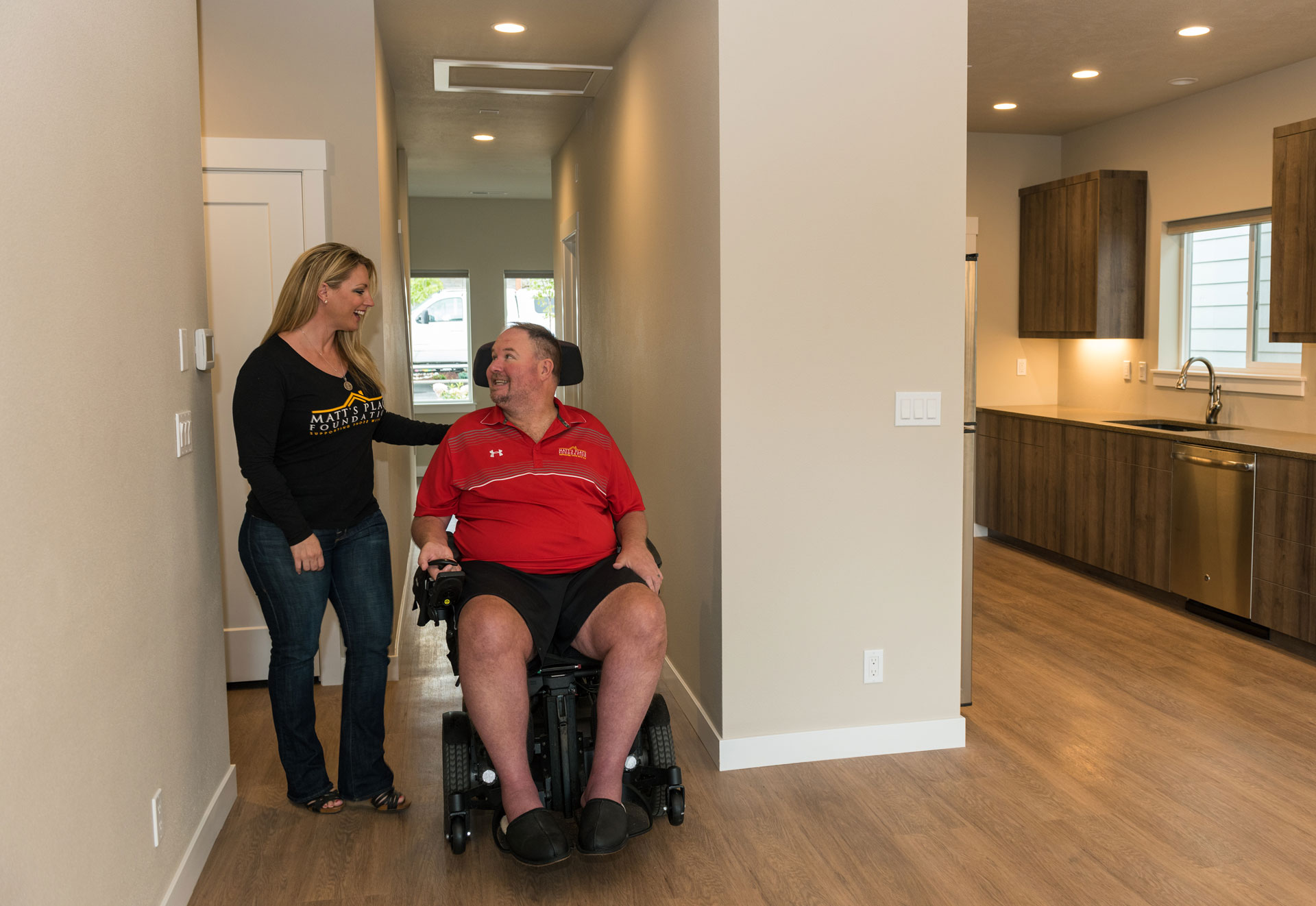
It was February 2015 when Matt was diagnosed with ALS. He and Theresa weren’t surprised. In fact, they knew before walking into their first doctor’s appointment Matt had the disease.
“I was losing strength in my hands and fingers,” Matt says. “I couldn’t do buttons or anything.”
That was their first indication. They searched the Internet for answers and came across ALS. They read everything about it; how it affects the nerve cells to the brain and the spinal cord, how it causes the muscles to waste away… how no one survives it.
Matt underwent a battery of tests.
“From start to finish, blood work to diagnosis, was three weeks,” he says. “The way they speeded it up, we knew something was wrong.”
Once they had confirmation, the couple continued their research, gathering all the information they could, this time about how to live with ALS.
Story continues after a quick message from our sponsor below.
They were shocked to learn it can cost hundreds of thousands of dollars just to manage the disease. As ALS progresses the need for expensive, high-tech equipment increases. ALS patients lose function of their limbs, requiring them to use things like mobility chairs and lifts. They also lose their ability to speak when the muscles around their lungs fail, restricting airflow. Many rely on eye-gaze technology that allows them to communicate through apps on a smart device.
Families have gone bankrupt outfitting their homes with all the needed technology and equipment, Theresa says.
Matt can lean on the Veteran’s Health Administration for help. But so many others are not as fortunate. One night as the two were lying awake, Matt and Theresa talked about how they could help.
“Theresa came up with the idea,” says Matt, quick to credit his wife. “She said ‘we should build smart homes to help [those with ALS].”
Matt’s Place Foundation was born that night.
“That became our mission,” Theresa says. “We had no idea what we were doing. We had just enough people in the right areas to be able to get this going for us.”

For the Wilds, the Foundation has been a way to support not only ALS patients but also individuals and families living with with other neurodegenerative diseases. The all-volunteer board held its first meeting at Capone’s Pub & Grill in Coeur d’Alene, and shortly thereafter the fundraisers started. In the past two and half years, Matt’s Place Foundation has raised over $200,000 and has helped 14 families with everything from $2,500 chair ramps to $15,000 mobility lifts.
But the largest effort was building the smart home. Matt’s Place Foundation teamed up with the Past President’s Council of the North Idaho Building Contractors Association to build the country’s fi rst smart home designated for an ALS patient and their family.
Donations poured in and allowed the Foundation to purchase a lot off Atlas Road. People in the community stepped forward in a big way, donating materials, labor, technology and time.
Construction started April 2017 and in three months the home was finished. “Many hands make light work,” Theresa says. “Because everyone pitched in, we did it lickity split.”
The Foundation will pay all the home-related bills including rent until the patient’s fi ght with ALS has ended. The home will then welcome another family.
For ALS patients, the home addresses most of their needs. It features widened hallways, timer-operated blinds and a hydraulic ceiling lift in the master suite that moves the patient from the bed to the open bathroom. All of the main floor controls are operated through voice, phone and eye-gaze technology.
“Everything you see has been donated,” Theresa says. “We have had a few minor expenses, but mostly the home was built by the community and local businesses.”
The Wilds are still in awe of the support they have received for their project.
“Many people here got behind the idea to make it a reality,” Matt says. “It’s really exciting. We never would have gotten to this point without everyone else.”
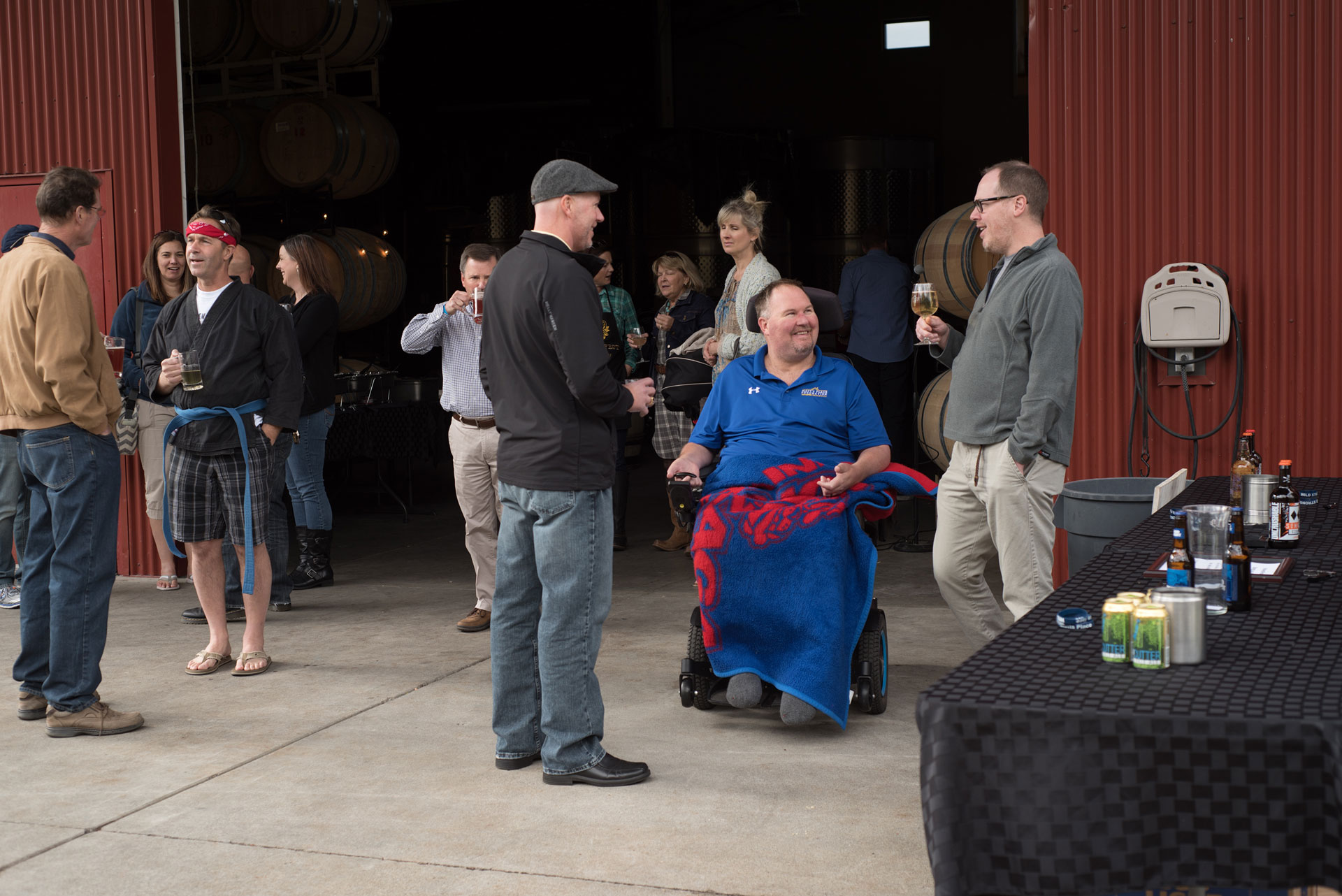
Matt and Theresa are in the preliminary stages of the next Matt’s Place. This one is set for Spokane and will be markedly different. Rather than amassing volunteers, Matt and Theresa are pulling together partners. WSU is one of them. Others are from the medical and building communities.
The concept, presented to the Wilds by a local manufacturer and a lumber company, is to build fully equipped smart blockhouses that can be dropped anywhere in the country. Think of a mother-in-law house, Matt says. The custom blockhouse could be dropped in the back yard of a family’s home. ALS patients could keep their independence and families could stay together.
Inspired by the widespread potential, the Wilds took the reins.
“We’re just in the design process now,” says Theresa. “If we can build this house and build it efficiently and it has all you need, boom here you go! This idea can suddenly not just be about ALS but also other diseases.”
Matt and Theresa are excited about their next project, but they prepare for more difficult times ahead.
They wait for when Matt will lose that strong deep voice of his, as most ALS patients do in the late stages of the disease. His lungs, he says, can move only about half the air they used to.
“Every time he progresses, it’s a mourning stage for both of us,” Theresa says. “This disease doesn’t just affect him. It affects everyone around him. It’s a roller coaster. Sometimes it’s bumpy every single day.”
ALS patients live on average three to five years from diagnosis. Sometimes, though uncommon, patients can live 10 or more years. Famed physicist Stephen Hawking has lived more than 50 years with ALS. Nobody else has done so.
As Matt describes the toll ALS has taken on his body, his wife leans in. Matt and Theresa have an ease about their relationship, despite the terribly difficult challenges they face together. The two dated before Matt’s diagnosis and married shortly after. They just celebrated their two-year anniversary, spending the evening at a board meeting for Matt’s Place Foundation.
They are deeply committed to each other and to the Foundation, and they have no plans to stop doing what they can to help other families in their fight.
“We just keep going,” Matt says.
When the new family settles into their smart home, Matt and Theresa hope they will live comfortably. And they hope they will feel the love and support they have felt.
They need only to look at the garage wall covered with handwritten messages from the community. Words of love, support and inspiration for those who stay at Matt’s Place and for Matt himself.
One message stands out. It’s from Theresa.
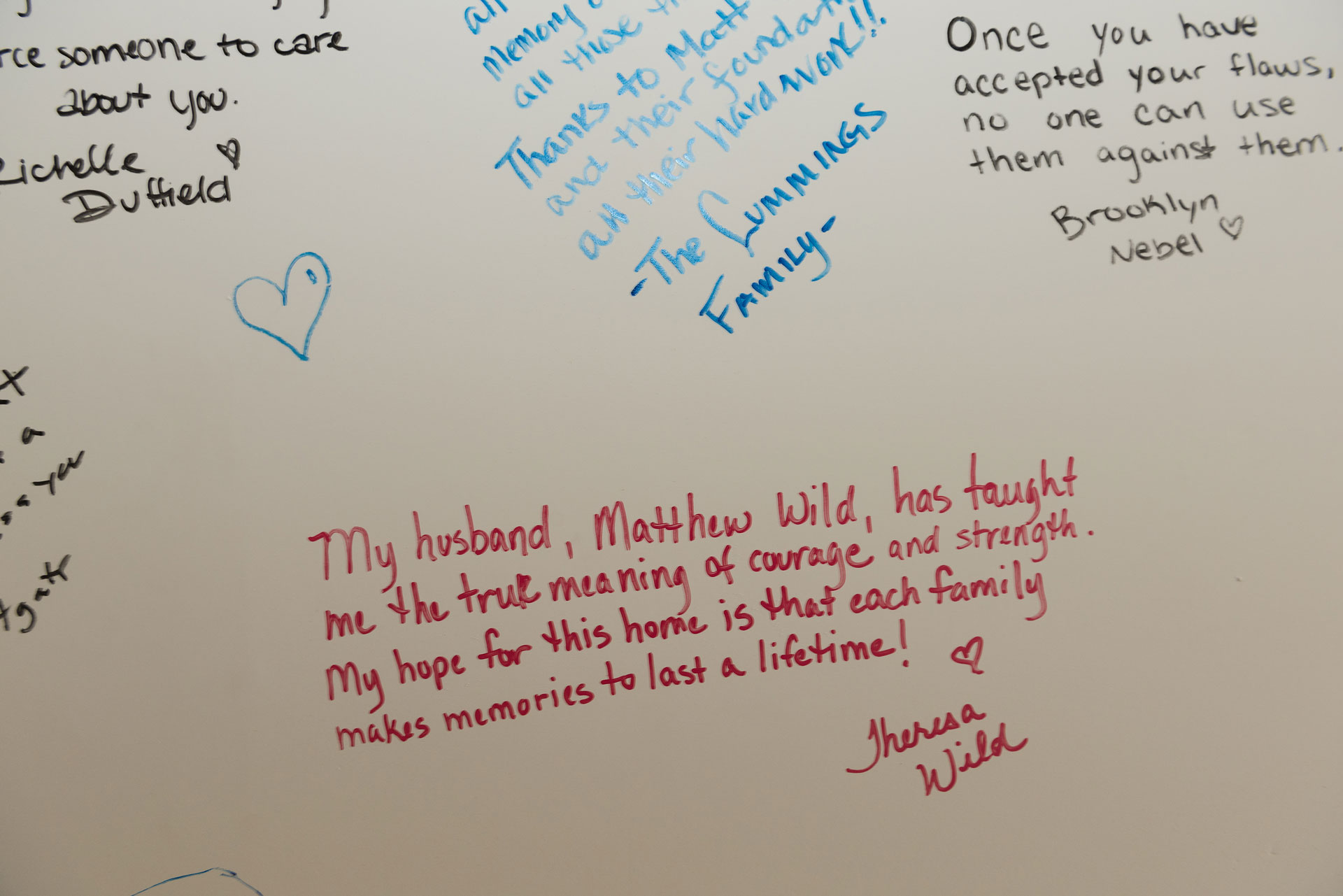
She signed it with a heart.
“Matt always tells me how strong I am,” she says. “But I watch Matthew, and I watch him struggle. He doesn’t do it with pity. He never complains. He never says ‘why me?’ He never says ‘this isn’t fair.’
“He says ‘we’re going to get through this.’
“And somehow we do.” N
By Kristina Lyman
As Featured In: Winter/Spring 2018


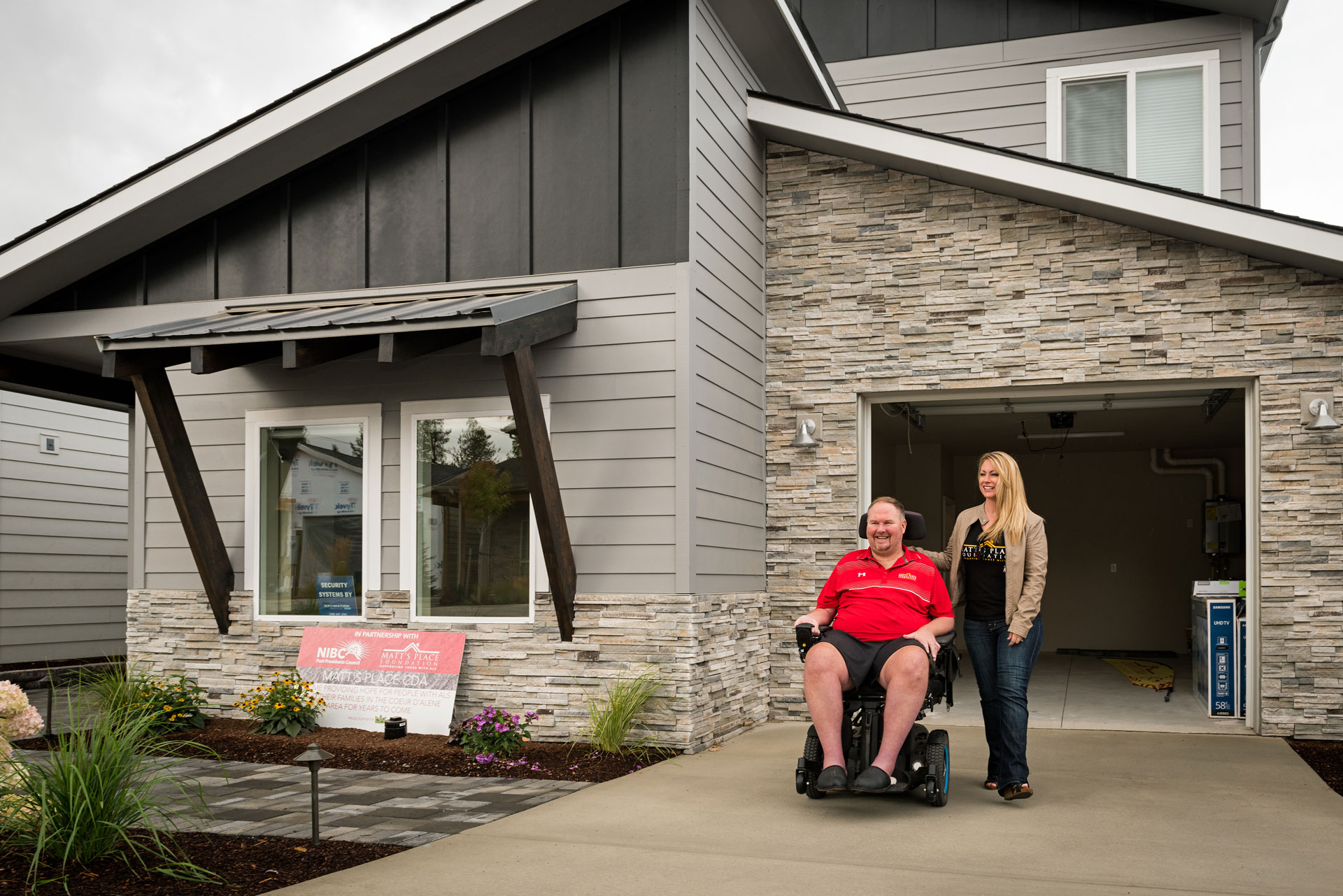
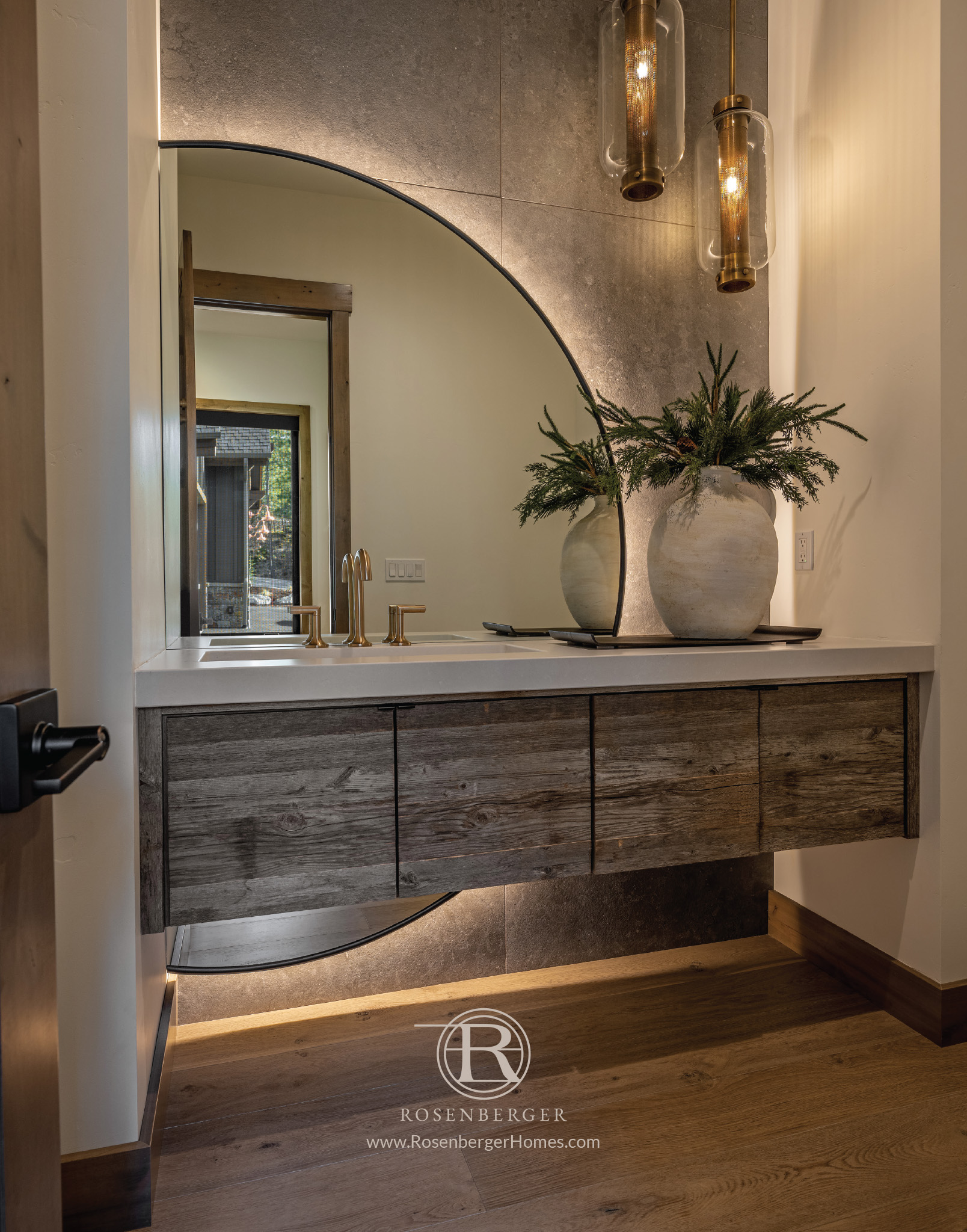
1 Comment
My mother was diagnosed with ALS in May 2014. Her doctor put her on riluzole, letting her know there was no cure but the medication might provide her a few more months of delayed symptoms. ALS progresses at different rates and affects different body parts first. My mother, being 80 at the time, fell into a category of what they call “fast progression” (older female). Her arms weakened first, then her hands, her mouth, and throat, and finally her lungs. Throughout her two-and-a-half-year ordeal, she was able to walk with assistance. All the while she continued to take the riluzole. If it bought my mother any time, we will never know. Her neurologist told us that if she couldn’t afford it, there was no real need to take it. She lost touch with reality. Suspecting it was the medication I took her off the riluzole (with the doctor’s knowledge) and started her on the ALS natural herbal formula we ordered from GREEN HOUSE HERBAL CLINIC, We spoke to few people who used the treatment here in Canada and they all gave a positive response, her symptoms totally declined over a 7 weeks use of the Green House ALS disease natural herbal formula. She is now almost 83 and doing very well, the disease is totally reversed! (Visit their website Greenhouseherbalclinic . com) I am thankful to nature, herbs are truly gift from God. Share with friends!!